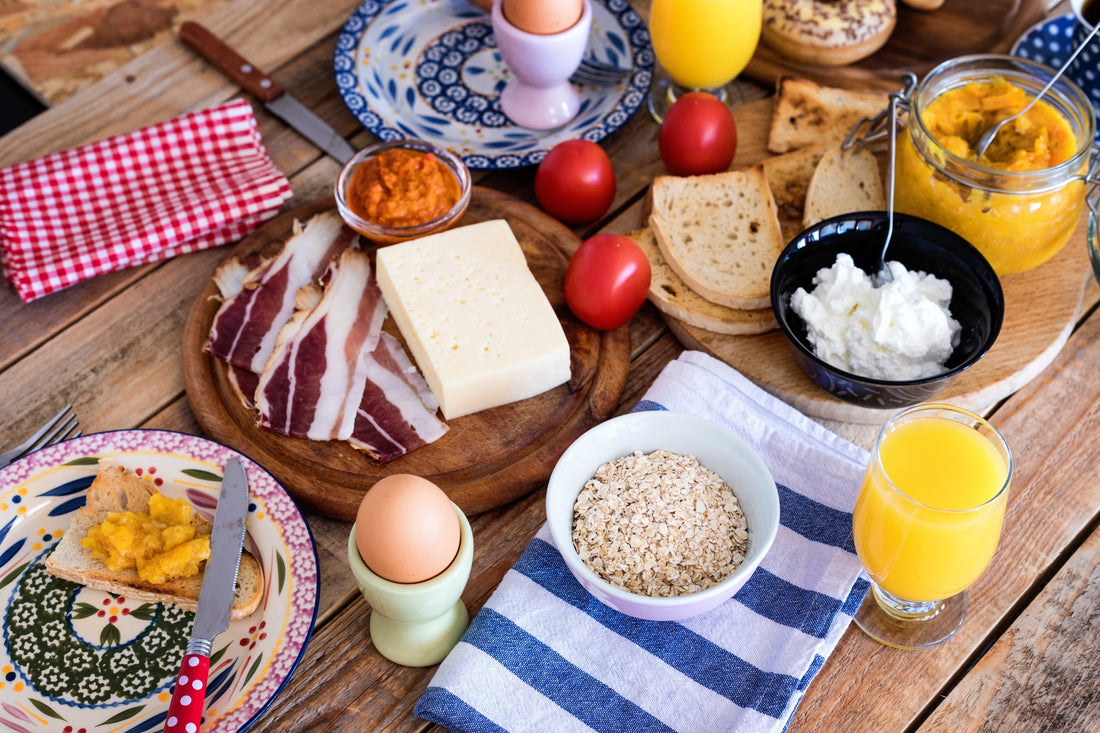
Counting Calories in Your Daily Diet
Share
If there is one thing more important than training for us to improve during our intense training periods, it is rest and nutrition. If we neglect adequate rest and nutrition during these periods, our body will not be able to repair itself adequately and will not be able to adapt adequately for our races; Even if this does not cause injury, it will cause us to overtrain and decrease our form. In other words, all the training we did and all the effort we spent will go to waste.
We know how to rest so this doesn't happen. So how should we approach nutrition? Before answering this question, let's look at how much energy we spend in a day.
Our Daily Calorie Expenditures
We have previously examined the energy sources our body uses. Our approach to nutrition should be to replace these energy sources we lose in our daily lives and exercises. In other words, we should consume the amount of food corresponding to how many calories we spend. The calories we spend during the day are generally divided into four parts: the calories we spend at rest (RMR), the calories we spend while chewing, swallowing, digesting, storing food, etc. calories we spend (TEF), calories we spend in exercises and physical movements (TEPA), and calories we spend in non-movement and non-exercise situations such as standing (NEAT).
The calories we spend at rest are expressed as resting metabolic rate (RMR). This refers to the amount of calories our body spends in a twenty-four hour period when we are completely at rest. As with everything, this value is different for everyone. Your gender, age, weight, height, genetic heritage, whether you do sports, etc. affects this value. The most reliable way to find out your RMR is to see a dietitian or get the help of a calorimeter when you wake up in the morning. But if you don't have time for these, you can calculate an approximate value with some formulas. The most commonly used of these is Mifflin-St. Jeor formula. In a comparative study with different formulas, Miffin-St. The Jeor formula has been shown to give better results than other formulas by measuring your RMR with a 10% margin of error. You can use the tool below to calculate your RMR with this formula.
| Sex: | |
| Weight(kg): | |
| Height(cm): | |
| Age: | |
| RMR(kcal): |
Calculating the calories we spend during exercise may seem a bit troublesome. For example, in order to calculate the calories we burned aerobically, we would have to wear a special mask and compare the amount of oxygen we take in with the amount of carbon dioxide we exhale. However, if you measure your exercises with a pulse sensor or power meter and feed these measurements to your smart watch, cycling computer or sports applications on your phone, these devices/applications are probably estimating the amount of calories you spend in your exercises. Unfortunately, predictions made in this way have some margin of error depending on the algorithm used. For example, Firstbeat, a company used by many smart watch brands for calorie estimation, wrote in its article that the predictions made by its algorithms have a 10% margin of error. However, knowing approximately the calories we spend makes our job much easier.
If you don't have a smart device that makes predictions for you, there's no need to worry. You can also make this prediction with MET values. MET stands for Metabolic Equivalent of Task, that is, the metabolic equivalent of an action. You can find a comprehensive list of these values here. You can estimate calories by placing these MET values into a formula along with your weight and training duration, or you can use the tool below that does this for you. This is difficult to predict for a mountain bike or trail running workout, but it will work for more stable activities such as road runs, road biking, swimming.
| Weight(kg): | |
| Excersize time(min): | |
| MET Value of the Activity: | |
| Calories(kcal): |
Calculating other remaining calories is a little more difficult. However, if you are using a smart watch, your watch may estimate the calories in the NEAT class based on your pulse rate. Apart from this, you can calculate some actions such as standing by looking at the MET table. Or, without going into all these details, you can calculate an average daily calorie consumption value, excluding exercise, by multiplying your resting metabolic rate by a value according to the table below.
| RMR(kcal): | |
| How Active Are You?: | |
| Günlük Kalori Tüketiminiz(kcal): |
You can initially eat according to this calculation and correct this value according to changes in your weight over time. Although it may seem very troublesome, it is actually a value that you can establish in a few months and perhaps you will never change. Now that we know how to calculate our daily energy consumption, let's look at the details of nutrition.
ABCs of nutrition
When you buy a food product from the market, you have probably seen a nutritional values table on the back of the package like the one below.

The second criterion is a bit complicated. How much of 3500 kcal will we get from proteins, how much from carbohydrates and how much from fats? This question has an answer that varies depending on many parameters. For example, in a study examining the nutritional patterns of 324 Canadian elite athletes, including endurance athletes, it was found that, on average, athletes received approximately 20% of their daily calories from protein, 27% from fat and 55% from carbohydrates. As can be seen, these athletes, who probably ate according to the advice of a dietician, were following a carbohydrate-based diet. Again, in a study involving ultra-marathoners and triathletes competing in the Ironman distance, the subjects were divided into two groups; the first group was given a carbohydrate-based diet consisting of approximately 59% carbohydrates, 14% protein and 25% fat, and the second group was given a carbohydrate-based diet consisting of approximately 10% carbohydrates, 19% protein and 25% fat. A fat diet consisting of 70 fats was followed. In this study, fat burning rates of those following a low-carbohydrate diet were higher at a certain effort level than those following a high-carbohydrate diet. This result, which means more use of fat, which can be considered an unlimited energy source, instead of glycogen, which can be stored in limited amounts during activity, sounds quite attractive, but another study also observed that athletes who eat fat-based foods increase their oxygen use during activity, thus decreasing their economy. If you are involved in activities that leave you out of breath and have high oxygen demand, a fat-based diet may not be for you.
The common point we can see in all of these studies is that the amount of protein athletes consume constitutes 15-20% of their daily calories. Let's say we decide to follow a balanced diet based on this information and consume our daily calories as 20% protein, 40% carbohydrates and 40% fat. Then, that day when we went for a long run and needed to consume 3500 kcal, which caused us so much trouble; We should take 175gr of protein, which corresponds to 700 kcal, 350gr of carbohydrates, which corresponds to 1400 kcal, and 155gr of fat, which corresponds to 1400 kcal. If this calculation confused you, you can read this article where we talk about the kcal equivalents of macronutrients. If you do not want to deal with this type of calculations yourself, you can use free calorie tracking applications such as MyFitnessPal.
Final Notes
- Apart from exercise, it would be better to get our carbohydrates from complex carbohydrates instead of simple sugars. This is important so that carbohydrates can be stored more efficiently.
- Apart from this, eating high-fiber foods also prolongs digestion and allows us to get more efficiency from the food we consume.
- On the contrary, during race times, it will be beneficial to shorten our digestion time by cutting down on fibrous foods. Since we want the foods we consume while competing to enter the bloodstream as soon as possible, foods that do not contain simple sugars and fiber should be our number one choice. You can click here to examine the energy sources you can use during the activity.
- In addition to macronutrients, we should also be careful to get enough minerals, vitamins and other micronutrients.
